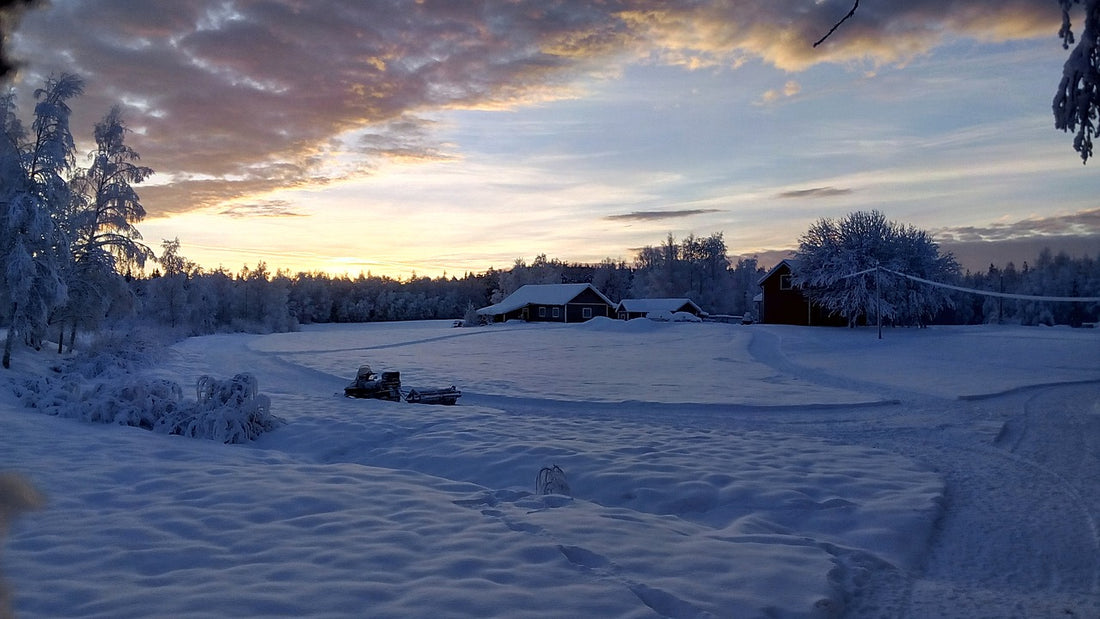Sami bracelets: a fashion from the great cold
Do you know the Sami bracelets? Also called Sami bracelets, Saamis, or Scandinavian bracelets, these jewels are going to be all the rage this winter! Made of reindeer leather, pewter and silver threads, these bracelets have found favor in the eyes of the stars. After the madness of Shamballas from Asia, the craze for Hipanema bracelets from Brazil, make way for Nordic fashion! Bijoux 4 Men tells you all about this men's fashion accessory...
Our models of Lapp bracelets
Your men's jewelry store is always on the lookout for trends. The Swedish bracelets are part of the novelties of the new school year.
The designer brand, Kalapurna, offers two Lappish bracelets. These jewels are unique pieces, made by hand, and in France. The brand makes it a point of honor to respect Sami know-how and the materials used.
> The "SIX" Saami Bracelet
This reindeer leather jewel is embellished with braided tin and silver threads. We love the attention to detail: the clasp is also made of reindeer antler. The width of this bracelet is 7mm.
> The "TRE" Sami bracelet
This Scandinavian bracelet is made of the same materials, however it is narrower than the first (5mm).
The shopping idea:
These two complementary models can be the subject of a Valentine's Day gift, or a birthday present! Everyone wears their version of the Nordic bracelet, as a sign of attachment.
But who are the Sami / Saami?
Originally, they are a nomadic people, who settled between four countries, beyond the Arctic Circle: Norway, Sweden, Finland and Russia.
The Sami have always herded reindeer. They thus exploit everything that nature can offer them: meat, leather, wood etc. Among the Sami, the seasons are determined by the rhythm of reindeer herding, from calving, marking, counting, castration and slaughter. They are thus called "the people of the 8 seasons".
The Sami culture is extremely rich, both in terms of traditions (legends, shamanism, etc.) and creation.
Sami craftsmanship is recognized beyond the borders: the Saami excel in the art of pewter and silver embroidery, they work reindeer leather to make clothes, but also jewelry, accessories. Their traditional costumes are remarkable for their bright and shimmering colors.
Long oppressed, the Sami number around 20,000 today, and have succeeded in preserving their culture. They have their independence day, their flag and their parliament.
Today, these indigenous people benefit from all modern technology: they watch television and travel by snowmobile.
Where did this fashion for the Nordic bracelet come from?
Sami bracelets are therefore traditional jewellery, worn for hundreds of years by the Saami people. Nothing predestined them to come to the forefront of the international scene before Hanna Wallmark revisited them...
Originally from Seskaro, a small island in northern Sweden, this designer spent her childhood surrounded by nature.She is inspired by the Saami people to create her jewelry, adding a fashionable touch. His Lappish bracelets offer variations of colors, patterns and sometimes even materials, such as jeans.
Hanna Wallmark bracelets were the first to set the trend. Since then, other designer brands such as Kalapurna, or Maria Rudman offer their own version of the Lapp bracelet.
How to recognize a real LAPON bracelet?
Again, beware of imitations! A Swedish bracelet made in the rules of the Art is made of reindeer leather (sometimes lamb), and decorated with the tenntråd, an embroidery or a braid of tin and silver, sewn by hand. Silver allows you to keep a beautiful patina, and to have a bracelet that ages well. The clasp button is made of reindeer antler. So beware of imitation bracelets, plastic or resin clasps, or embroideries in pewter alone. Kalapurna respects all its conditions.
Learn more about the Sami:
- the website of the Swedish institute
- an article from Le Monde

